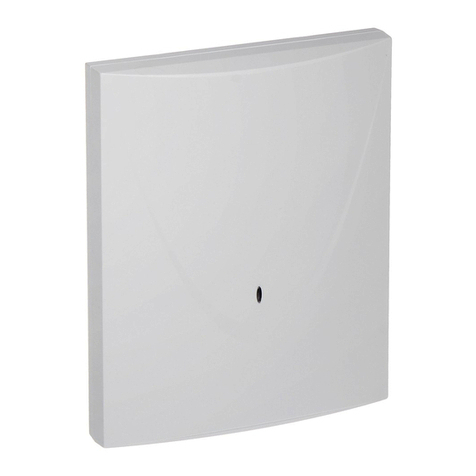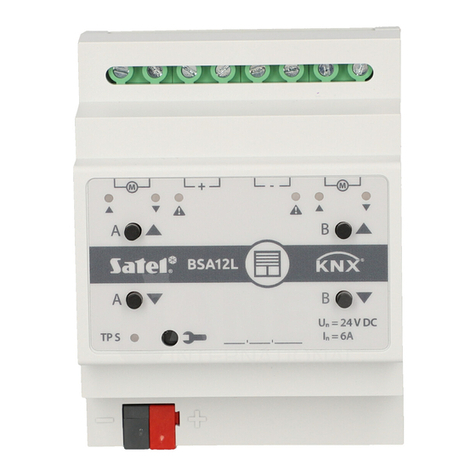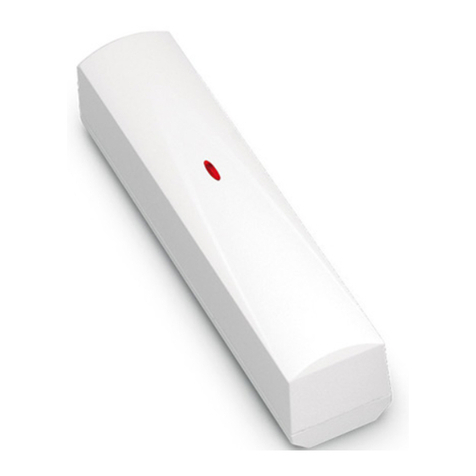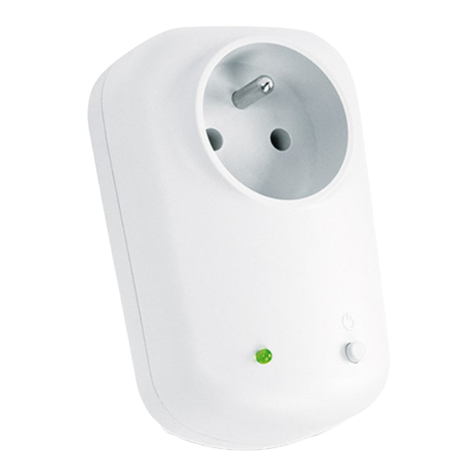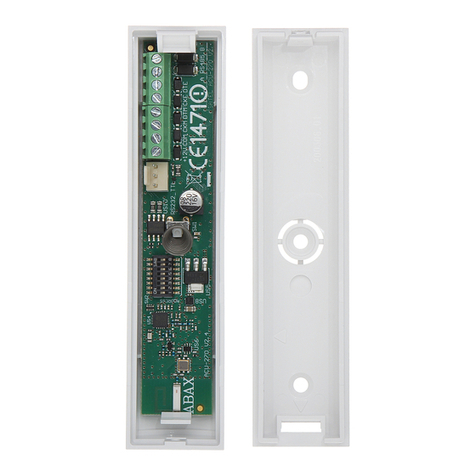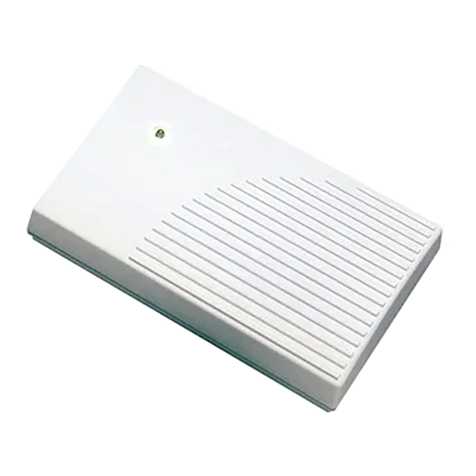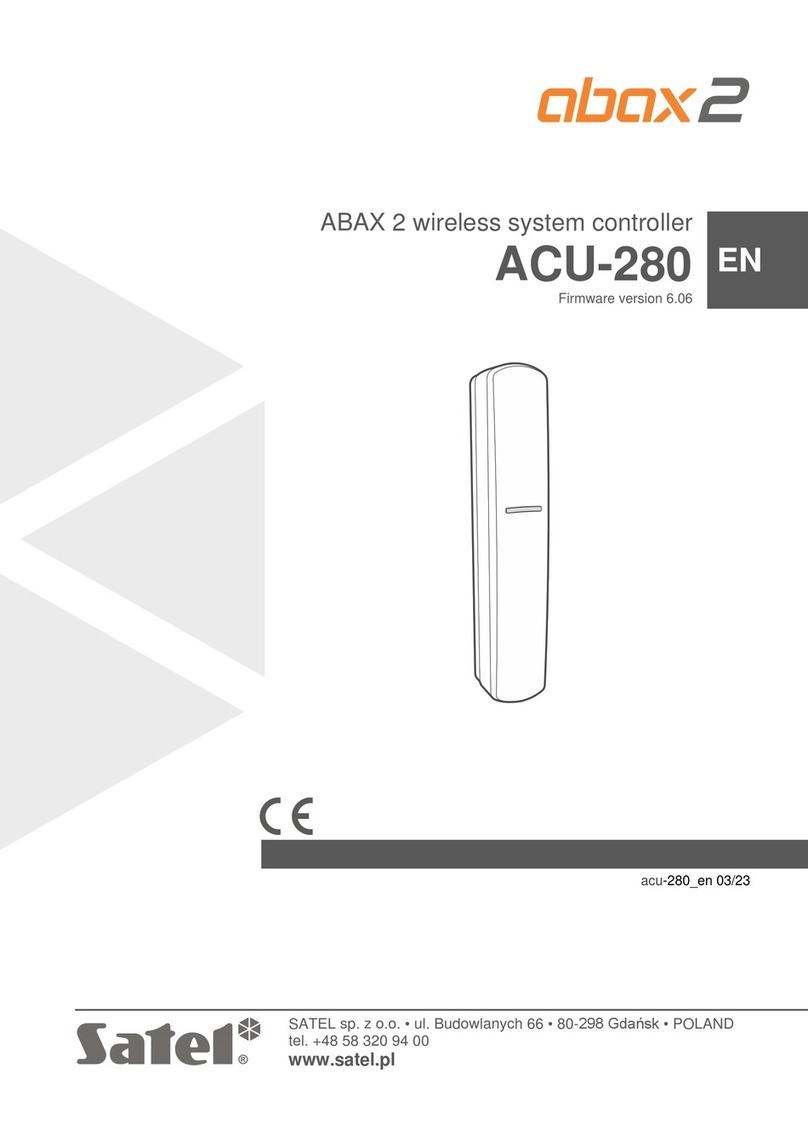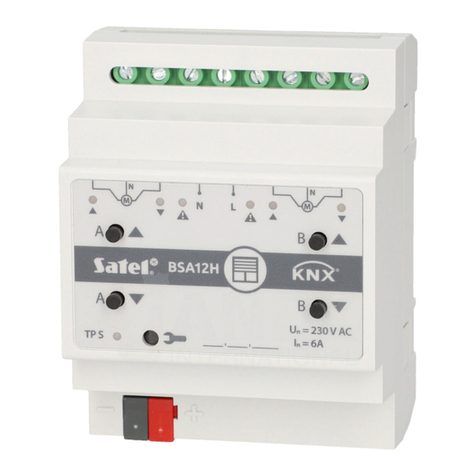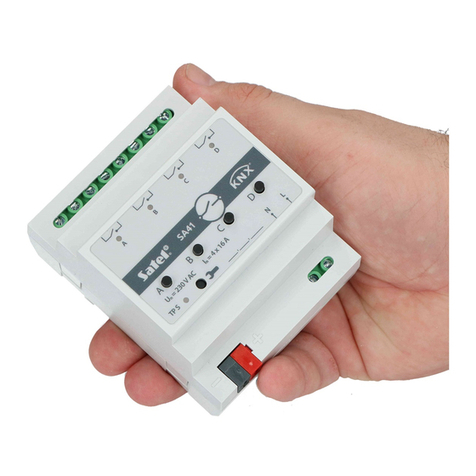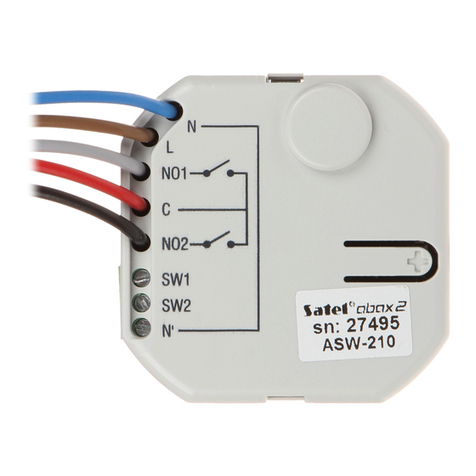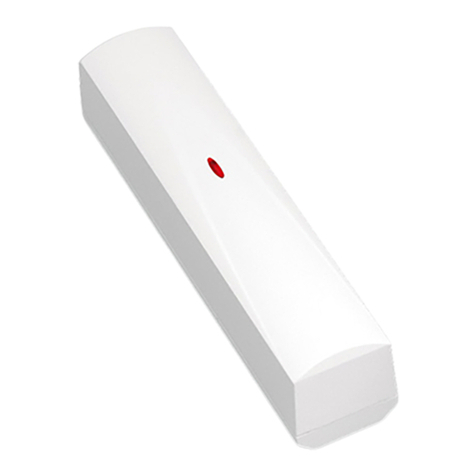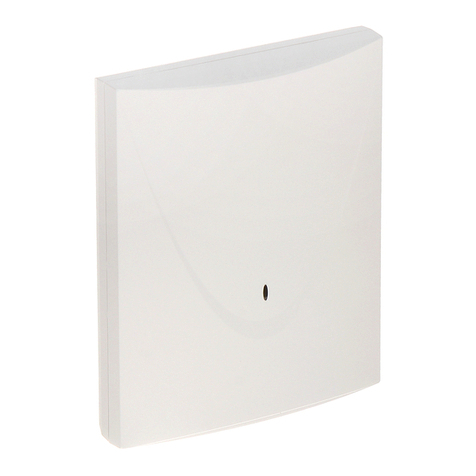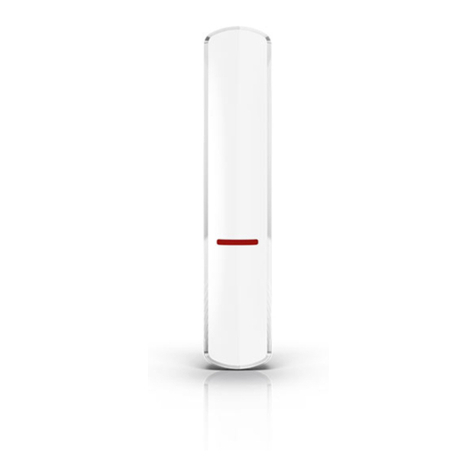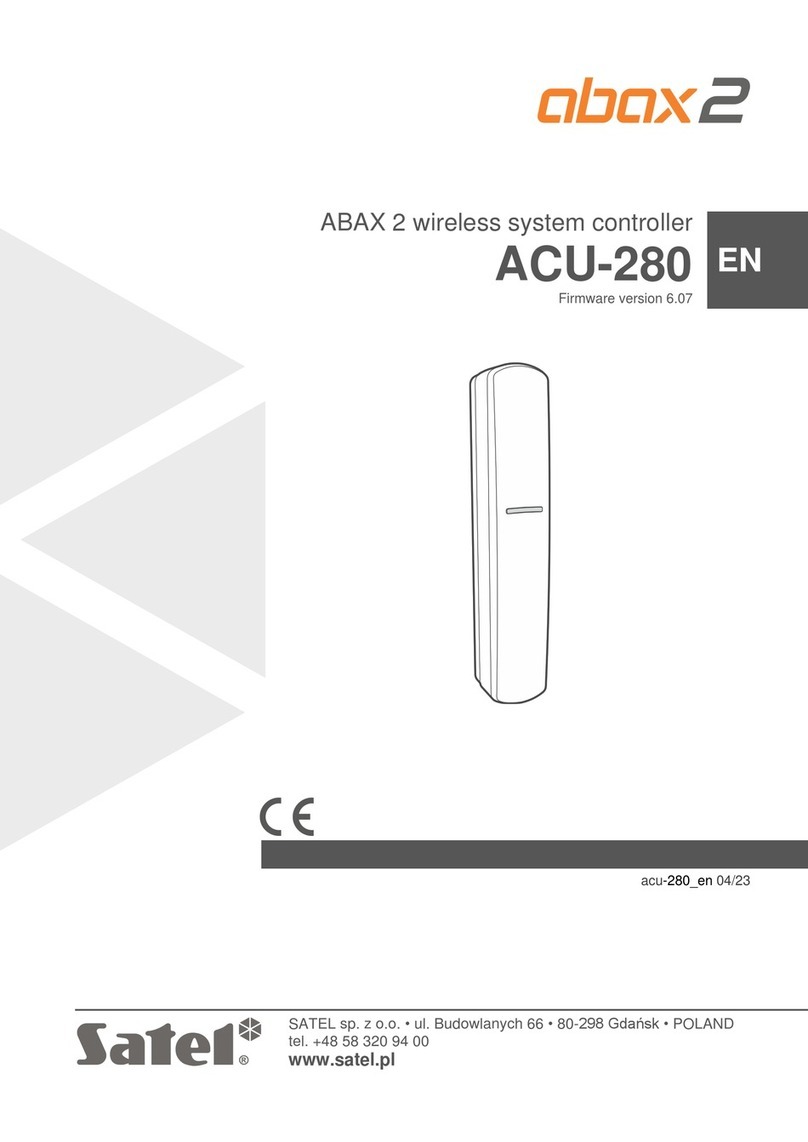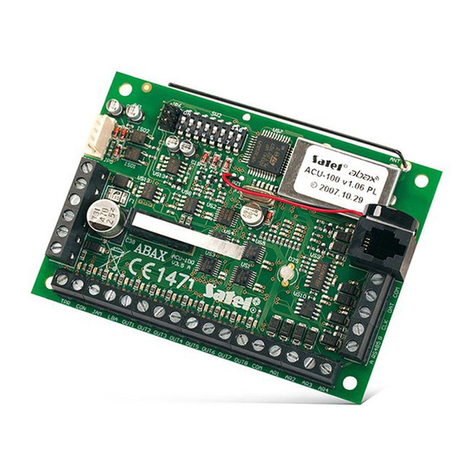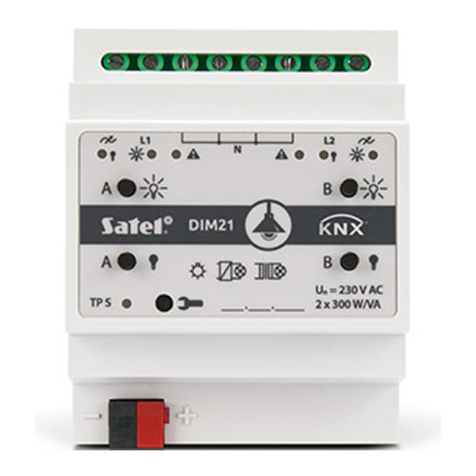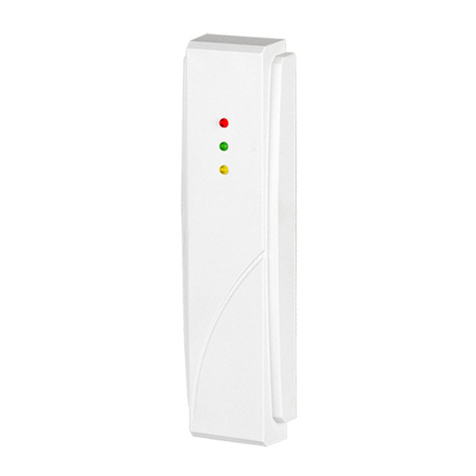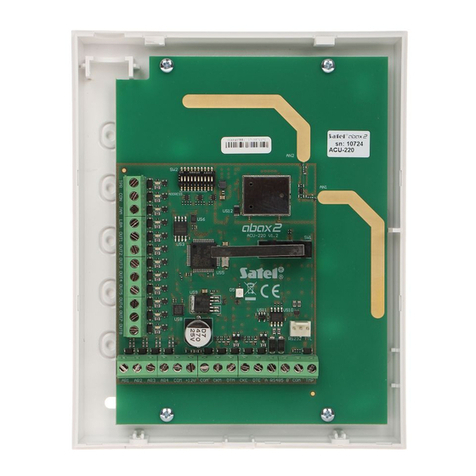
SATEL RX-2K/RX-4K2
6 – tamper contact;
7 – relays (in RX-2K only 2).
Description of terminals:
AR – information signal input – security system status (armed/disarmed);
AL – information signal input – alarm;
LV – signal output – low battery in remote keyfob (OC); the output activates when the
receiver detects low voltage in the remote keyfob battery and remains active until
a remote keyfob with good battery is used (it can be used e.g. to report a trouble in
the security system);
SS – siren control output (OC);
+12V – supply voltage input (direct voltage from 9 V to 16 V);
COM – common (ground);
Cn – common terminal of relay;
NCn – normally closed terminal of relay; n – relay (channel) number
NOn – normally open terminal of relay;
TMP – tamper contact terminals.
The two-color LED indicates the module operating status and facilitates programming of the
receiver parameters:
•green light – normal operating mode;
•red light – receiving signal from remote keyfob in normal operating mode;
•green blinking light – waiting for the first press of the remote keyfob button when entering
new remote keyfob into the receiver memory;
•red blinking light:
−waiting for the second press of the remote keyfob button (when entering new remote
keyfob into the receiver memory),
−the remote keyfob battery is exhausted (after pressing the remote keyfob button normal
operating mode),
−clearance of the receiver memory,
•alternately blinking red and green light – programming the monostable relay ON time;
•blinking by the sequence: red color, green color, extinction – started mode of programming
from the computer.
The programming buttons PRG1 to PRG4 allow:
•entering remote keyfobs into the receiver memory;
•programming the monostable relay changeover time for the given channel.
Additionally, the PRG1 button makes it possible to clear the receiver memory.
2. Installation
The receiver electronics board includes components sensitive to electrostatic discharges.
These electrostatic discharges should be removed prior to installation. Also, touching the
receiver board components should be avoided in the process of installation.
The RX-2K/RX-4K is mounted in a plastic housing. When closing the housing, be particularly
careful so that the programming button is not pressed in by the cables.
It is recommended that the manufacturer specified batteries be used in the remote keyfobs.
The battery status must be periodically checked (e.g. by noting how the LED on the receiver
board lights when the remote keyfob button is being pressed) and, if necessary, the used
batteries must be replaced by new ones.
